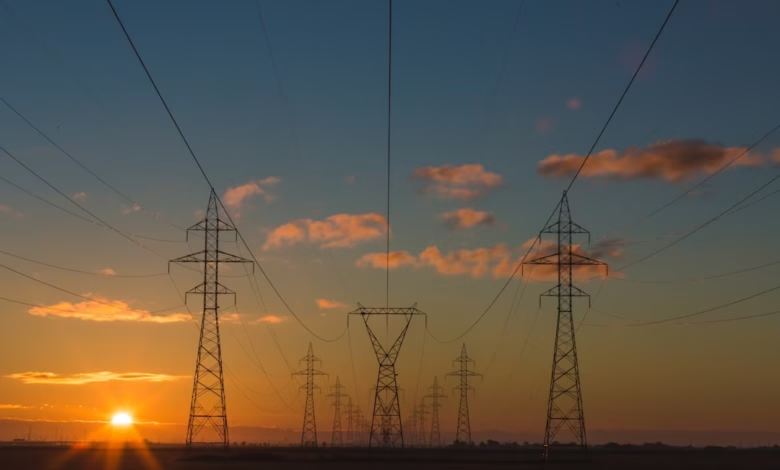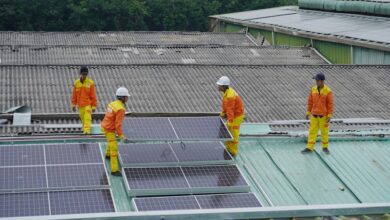Offshore Energy Revolution: Navigating Wind Farms, Oil Rigs, and Innovations in the Energy Transition

As the world grapples with the urgent need to transition from traditional fossil fuels to greener alternatives, offshore energy production has emerged as a critical component of the global energy landscape. With the rise of wind farms and oil rigs, the seas are becoming vital frontiers in the quest for energy security and sustainability. This article delves into the multifaceted world of offshore energy, highlighting its role in the energy transition, the innovative technologies that enable the coexistence of renewable energy and fossil fuels, and the future trends shaping this dynamic sector. By exploring the interplay between energy markets, energy policy, and climate change solutions, we will uncover how offshore energy can drive advancements in energy storage, smart grids, and carbon capture technologies. As we navigate the complexities of energy economics and the growing demand for distributed energy solutions, it becomes clear that offshore energy is not just a temporary fix but a pivotal player in achieving global energy efficiency and combating climate change. Join us as we explore the promising horizon of offshore energy and its significant implications for the future of energy investments, exports, and imports.
- 1. The Rise of Offshore Energy: Exploring Wind Farms and Oil Rigs in the Energy Transition
- 2. Innovations in Offshore Energy: How Renewable Energy and Fossil Fuels Coexist at Sea
- 3. Future Trends in Offshore Energy: Energy Storage, Smart Grids, and Climate Change Solutions
1. The Rise of Offshore Energy: Exploring Wind Farms and Oil Rigs in the Energy Transition
The global energy landscape is undergoing a significant transformation, driven by the imperative to reduce carbon emissions and combat climate change. This energy transition is marked by a notable rise in offshore energy production, with wind farms and oil rigs emerging as pivotal components in reshaping energy markets. As countries strive to enhance energy security and meet domestic energy demands, offshore wind energy has gained traction as a viable renewable energy source, harnessing the power of coastal winds to generate clean electricity.
Offshore wind farms are not only instrumental in diversifying energy portfolios but also in decreasing reliance on fossil fuels. With advancements in energy storage and energy efficiency technologies, wind energy has become more reliable and cost-effective. This shift aligns with global energy trends that favor green energy solutions, as countries seek to meet stricter energy policies and climate commitments. According to the International Energy Agency (IEA), offshore wind capacity is expected to play a crucial role in achieving carbon neutrality by mid-century, further emphasizing the importance of energy investment in this sector (IEA, 2021).
In tandem with wind energy, oil rigs continue to be a significant part of the energy equation. While there is a pressing need to transition away from fossil fuels, existing oil and gas infrastructure can support the move towards cleaner energy. Innovations such as carbon capture technologies are being integrated into offshore operations, aiming to reduce greenhouse gas emissions while still utilizing thermal energy resources. This dual approach allows for a more gradual transition, ensuring energy exports and imports remain stable during the shift towards renewable energy.
Moreover, the integration of smart grids and distributed energy systems enhances the efficiency of offshore energy production. These technologies facilitate better energy transportation and management, optimizing the balance between supply and demand while accommodating fluctuations in energy generation. As countries invest in hydrogen energy and bioenergy, offshore platforms may evolve to become hubs for diversified energy production, blending various forms of renewable energy.
In conclusion, the rise of offshore energy, particularly through wind farms and oil rigs, signifies a pivotal moment in the energy transition. By embracing renewable energy solutions and integrating innovative technologies, we can forge a sustainable path forward, addressing urgent climate challenges while ensuring energy security and economic viability in the evolving energy landscape.
References
International Energy Agency. (2021). Offshore Wind Outlook 2021. Retrieved from https://www.iea.org/reports/offshore-wind-outlook-2021
2. Innovations in Offshore Energy: How Renewable Energy and Fossil Fuels Coexist at Sea
The offshore energy sector is witnessing a remarkable transformation, blending innovative technologies in renewable energy with traditional fossil fuel extraction. This synergy is essential for navigating the global energy transition, as countries aim to balance their energy portfolios amidst climate change concerns and evolving energy policies.
In recent years, significant advancements in wind energy have emerged, particularly with the development of floating wind farms. These offshore installations can harness powerful winds in deeper waters, where conventional fixed-bottom turbines are not feasible. Such innovations enhance energy efficiency and bolster energy security by diversifying energy sources. Additionally, the integration of smart grids enables better management of energy distribution, ensuring that renewable energy can be efficiently transported to where it's needed most.
While renewable energy takes center stage, fossil fuels remain a critical component of offshore energy production. Technologies like carbon capture are being employed to reduce the environmental impact of oil and gas extraction. By capturing carbon emissions before they enter the atmosphere, these innovations contribute to a more sustainable energy landscape while allowing fossil fuel usage to persist during the transition to greener alternatives.
As energy markets evolve, energy investments are increasingly directed toward hybrid models that incorporate both renewable and fossil fuel sources. This dual approach enhances energy reliability and creates a more resilient energy infrastructure, which is vital for meeting the demands of electric vehicles and other emerging technologies.
Moreover, energy R&D is crucial in exploring future possibilities such as hydrogen energy and thermal energy from offshore sources. These innovations not only expand the offshore energy portfolio but also contribute to energy exports, enhancing a nation's position in global energy economics.
In summary, the coexistence of renewable energy and fossil fuels at sea represents a pragmatic approach to achieving energy transition goals. By leveraging innovations in energy storage, hydropower, bioenergy, and more, the offshore energy sector can play a pivotal role in shaping sustainable energy futures while addressing the challenges posed by climate change.
3. Future Trends in Offshore Energy: Energy Storage, Smart Grids, and Climate Change Solutions
The future of offshore energy is poised for transformative changes, driven by advancements in technology and a global commitment to combat climate change. As nations shift towards renewable energy sources, several key trends are emerging that will shape the offshore energy landscape.
Energy storage is becoming increasingly vital in ensuring the stability and reliability of offshore energy systems. As the integration of renewable energy sources like wind and solar power grows, the need for effective energy storage solutions, such as batteries and pumped hydro storage, becomes paramount. These technologies will facilitate the smooth transition of energy from production to consumption, allowing for better management of energy efficiency and peak demand.
Smart grids are another crucial trend in the evolution of offshore energy. By harnessing the power of digital technology, smart grids can enhance energy management, optimize distribution, and improve energy security. These intelligent systems enable real-time monitoring and control of energy flows, facilitating a more responsive energy market that can adapt to fluctuations in demand and supply. As a result, smart grids will play a significant role in integrating distributed energy resources and promoting energy resilience.
In the context of climate change solutions, offshore energy presents unique opportunities. Innovations in carbon capture technology and the development of hydrogen energy are becoming more prominent. Carbon capture systems can be integrated into offshore facilities to mitigate emissions from fossil fuels, while hydrogen energy offers a clean alternative that can be produced from renewable sources. This energy transition not only supports global energy trends but also aligns with emerging energy policies aimed at reducing carbon footprints and enhancing sustainability.
Moreover, as countries race to meet their climate commitments, investment in offshore energy infrastructure is expected to surge. Energy R&D will focus on maximizing the potential of offshore wind farms, oil rigs, and other marine energy sources. This shift will not only foster energy exports but also position nations as leaders in the growing global energy markets, ensuring a more sustainable future.
In conclusion, the future of offshore energy is set to be defined by innovations in energy storage, the implementation of smart grids, and a renewed focus on climate change solutions. As we navigate this energy transition, the need for sustainable practices and policies will become increasingly critical in addressing the challenges posed by fossil fuels and ensuring a resilient and efficient energy landscape.
In conclusion, the offshore energy sector is poised for significant growth as we navigate the complexities of the energy transition. The rise of offshore wind farms and oil rigs highlights a crucial phase in the global energy landscape, where both renewable energy and fossil fuels can coexist while paving the way for a more sustainable future. Innovations such as energy storage solutions and smart grids are essential to enhancing energy efficiency and security, allowing us to better manage the integration of diverse energy sources, including nuclear energy, hydropower, and bioenergy.
As we look ahead, the future trends in offshore energy will be shaped by the need to address climate change and meet the demands of evolving energy markets. Investments in emerging technologies, like carbon capture and hydrogen energy, will play a vital role in achieving energy sustainability. Moreover, the continued focus on distributed energy resources and electric vehicles will further transform energy transportation and consumption patterns, ensuring that we are prepared for the challenges of tomorrow. By aligning energy policy with global energy trends, we can foster a resilient offshore energy sector that not only meets our current needs but also secures a greener and more efficient energy future for generations to come.
Through ongoing energy R&D and strategic energy exports and imports, we can enhance our energy economics and ultimately contribute to a more balanced and sustainable global energy system. Embracing these innovations will be key to achieving a successful energy transition, making offshore energy not just a viable option but a cornerstone of our collective efforts toward a sustainable, low-carbon future.





